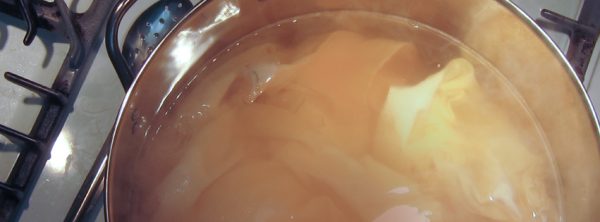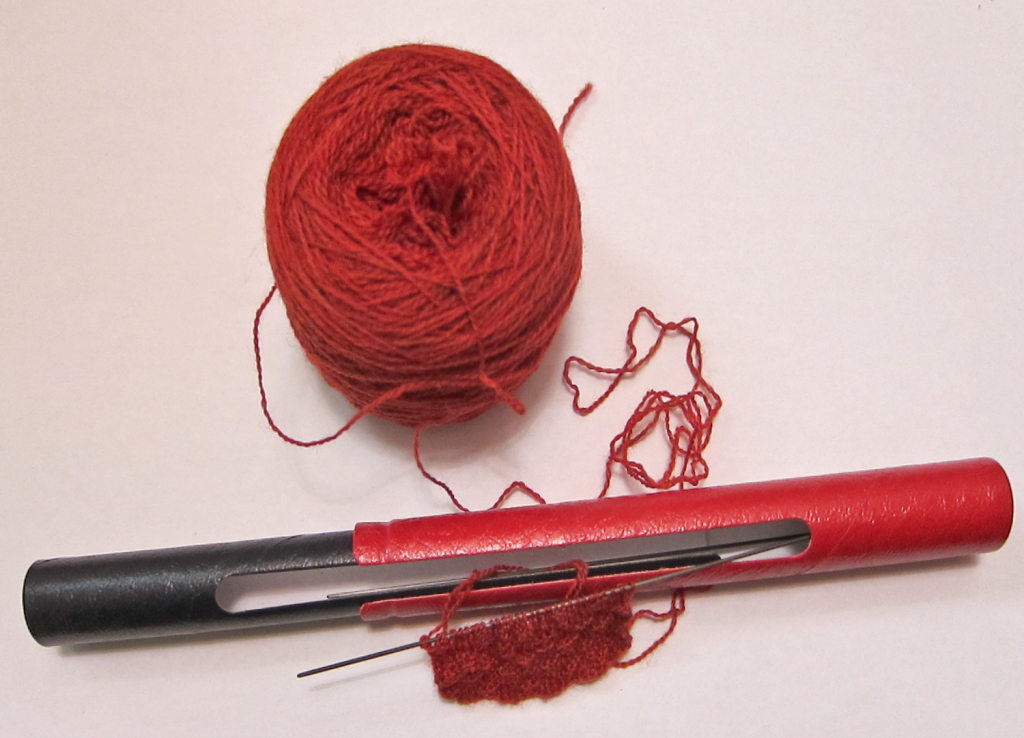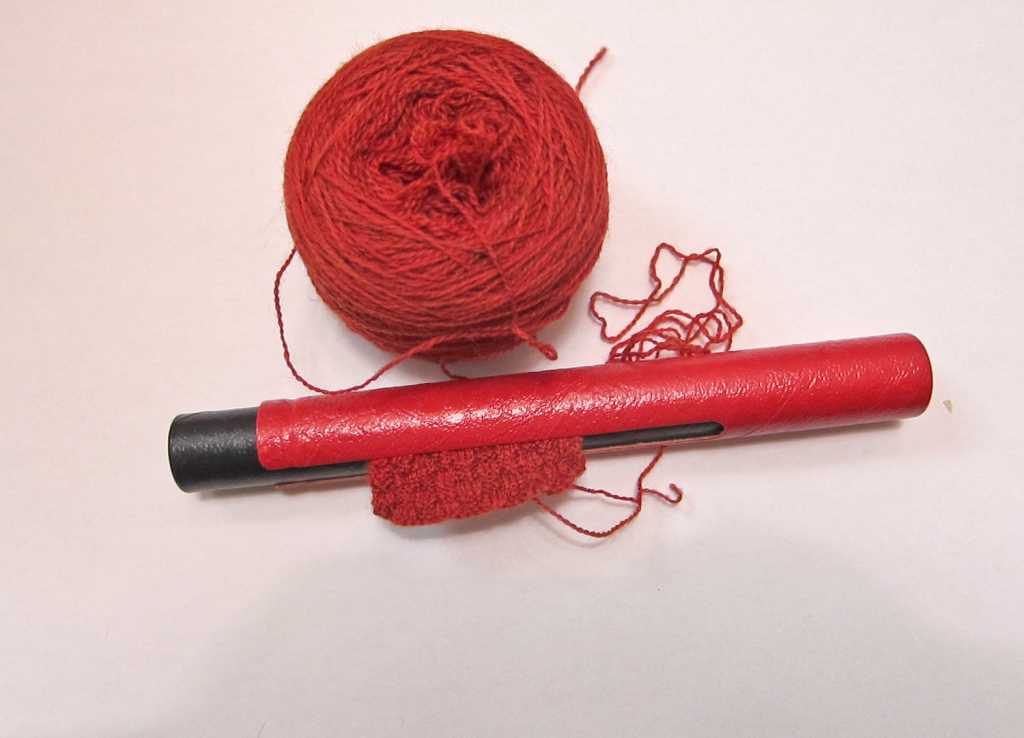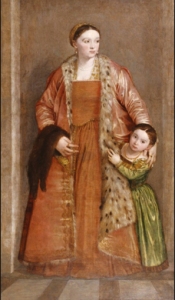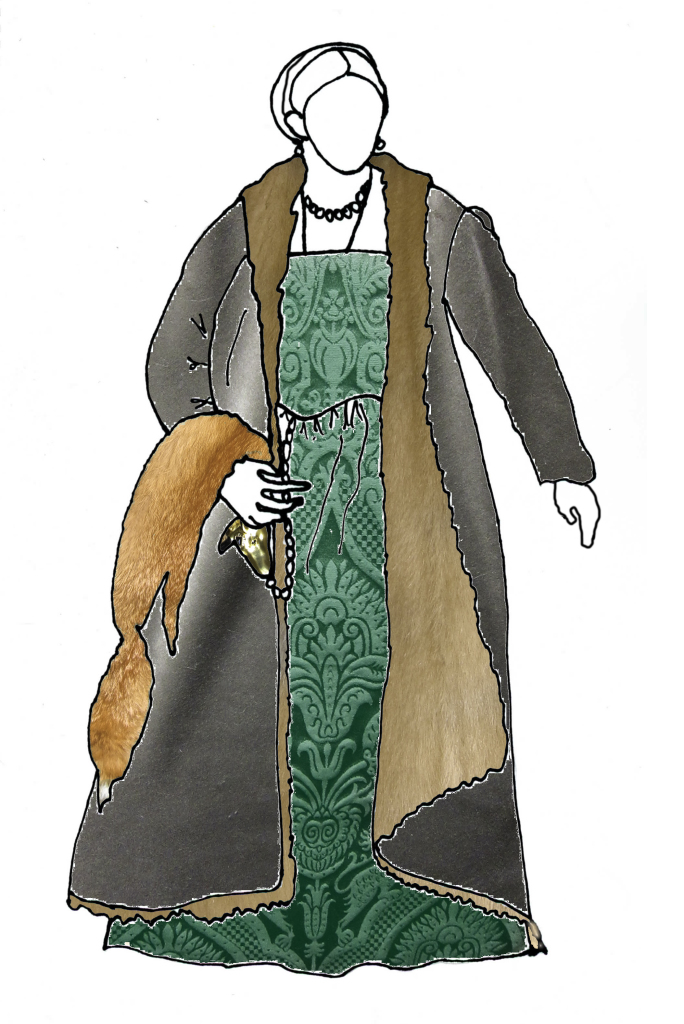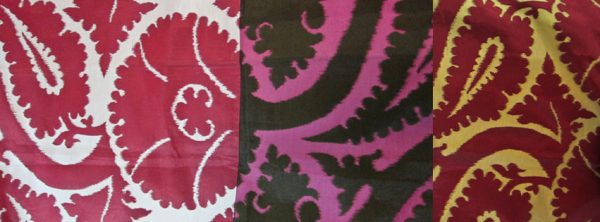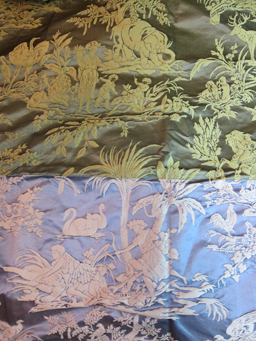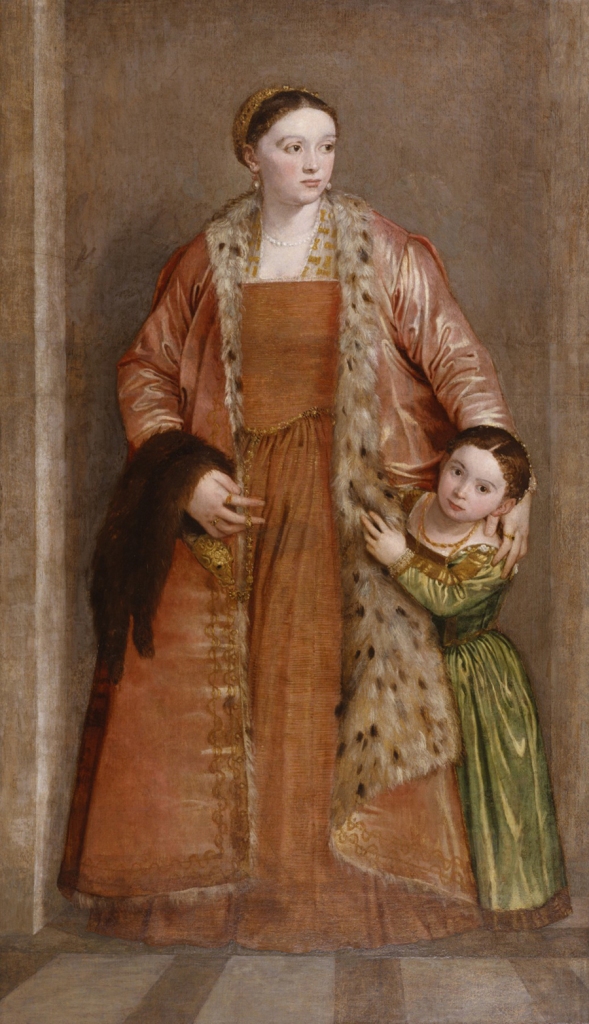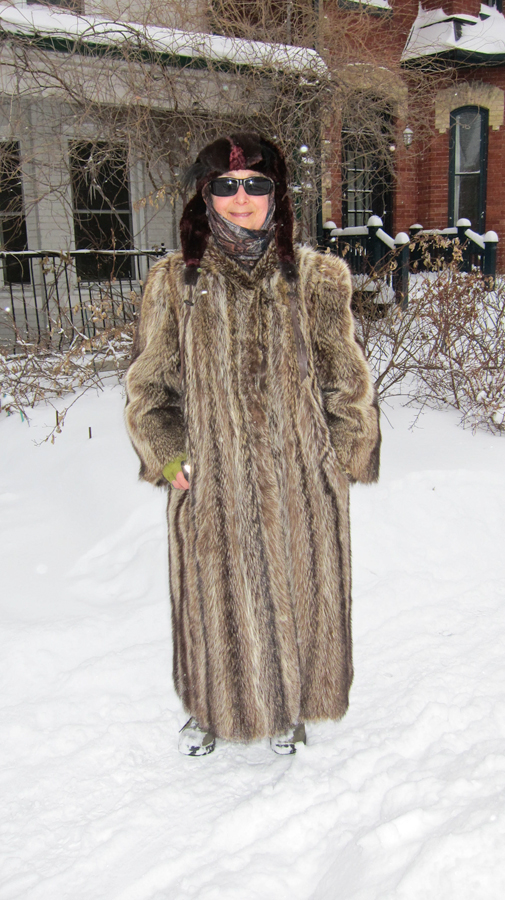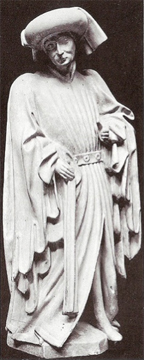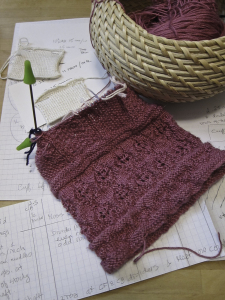
My first attempt at knitting the Eleonora stockings in silk was an education! (My first-first attempt was in wool, which I’ve had lots of experience with – and the gauge was way too big, so I abandoned it.)
To get back to the silk: I wanted to dye the yarn a true red with cochineal.
Since cochineal is sensitive to ph – an acidic dyebath pushes it toward red and a basic one towards purple – I used neutral ph distilled water for the dyebath and added vinegar in an attempt to shift the colour towards red.
Though I’ve gotten bright reds with cochineal & vinegar on wool, for some reason the yarn refused to become red no matter how much vinegar I added.
It settled to a raspberry mousse shade and refused to budge, so I worked with that.
When I started to knit the cuff, I discovered that it knit up to significantly fewer rows per vertical inch than the swatch I’d made. This squashed the detail so badly that I could hardly see it, which surprised and puzzled me.
I asked a friend who had knitted in the round with silk, and apparently this was due to the fact that, unlike wool, silk has no “memory”. Wool springs back to its original size; silk stays stretched.
To make the pattern look right, I knit each pattern row twice. This made the pattern a little longer, but that was better than squashed.
For the swatch, I just knit on the needle part of a circular needle, back&forth with very little pulling, so it didn’t stretch. Working in the round on the stocking, I was pulling the piece around the whole needle, so it did stretch.
The other disappointment was that the surface of the yarn scuffed, spawning little balls of purple fluff. If this happened during the knitting, the finished stockings would probably get scuffed & covered with purple fluff when worn, obscuring the pattern.
Which would make knitting so much complicated detail kind of pointless.
So my next attempt will either be in wool or a wool/silk blend, depending on budget & availability, and if it comes out on the purple end of the scale when I dye it, I’ll try overdying it with madder to get a true red.
Live&learn!
Save
Save
Save
Save

